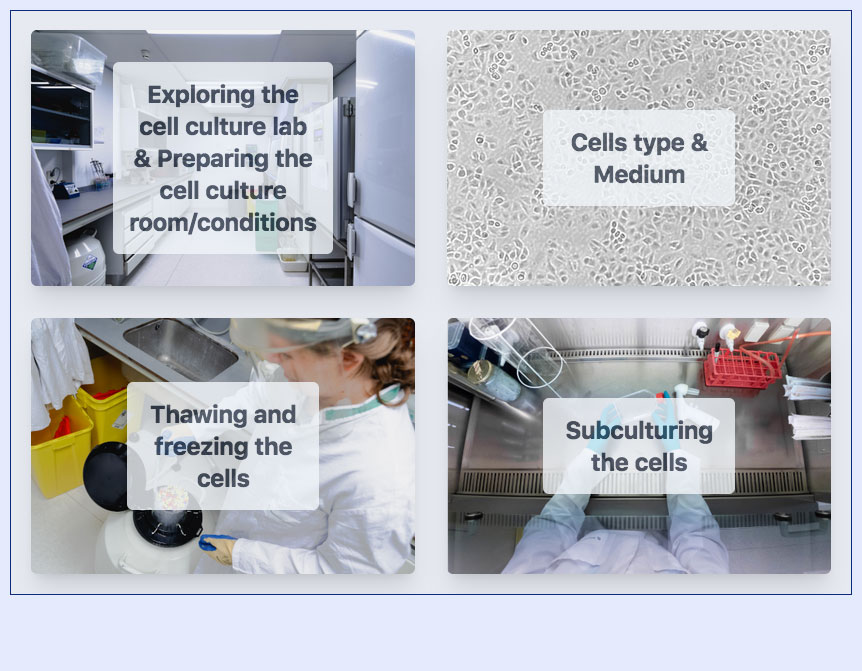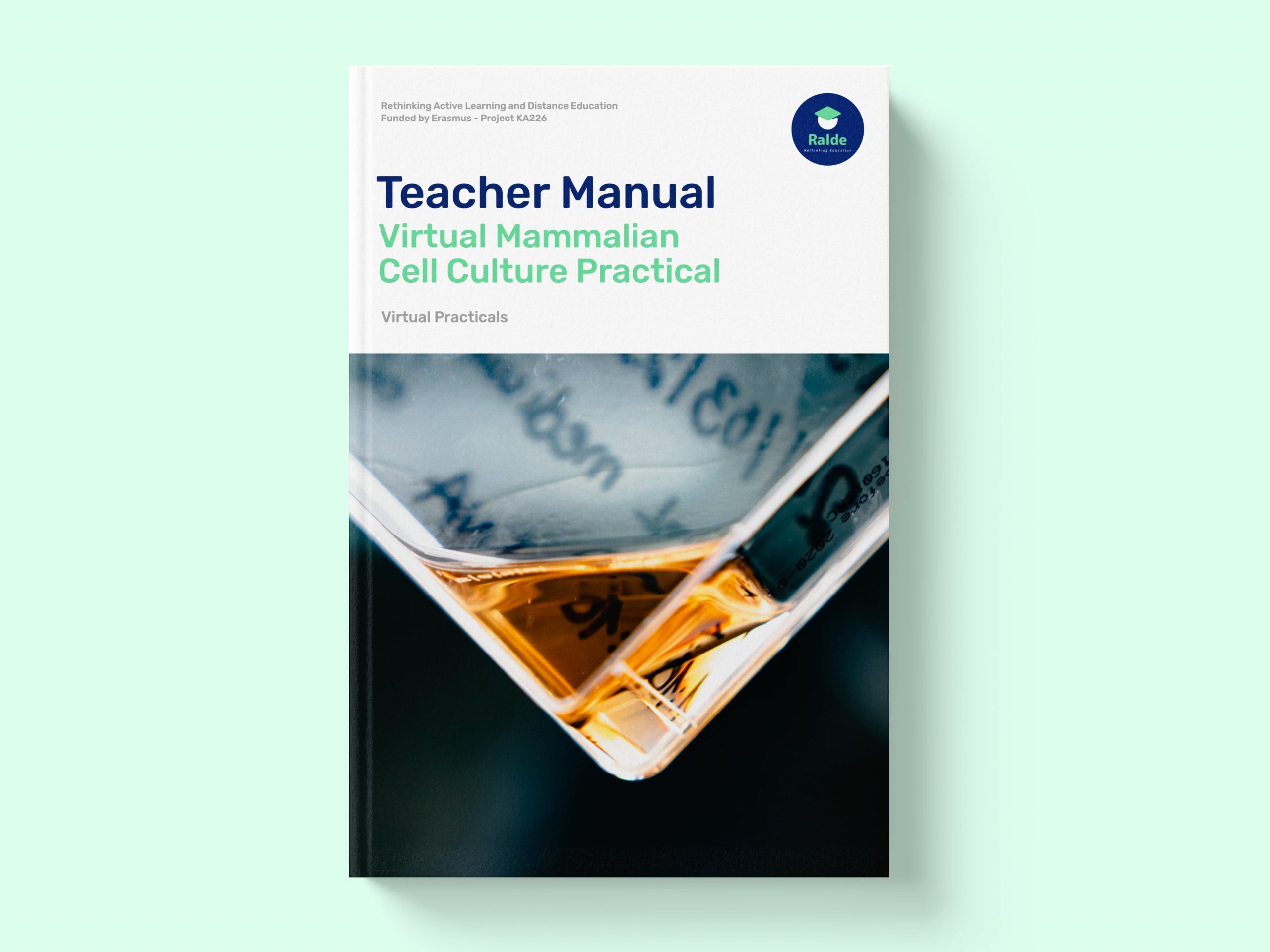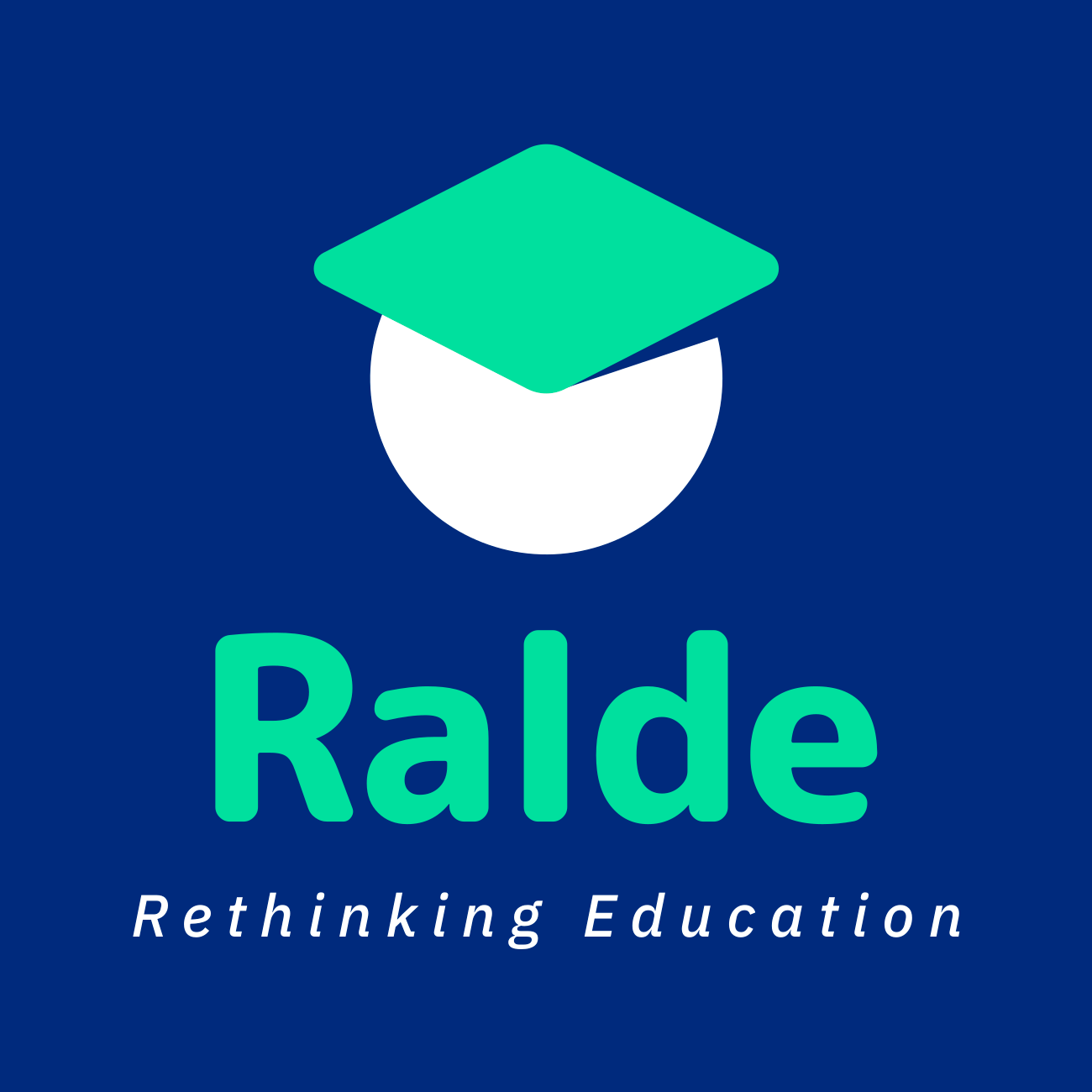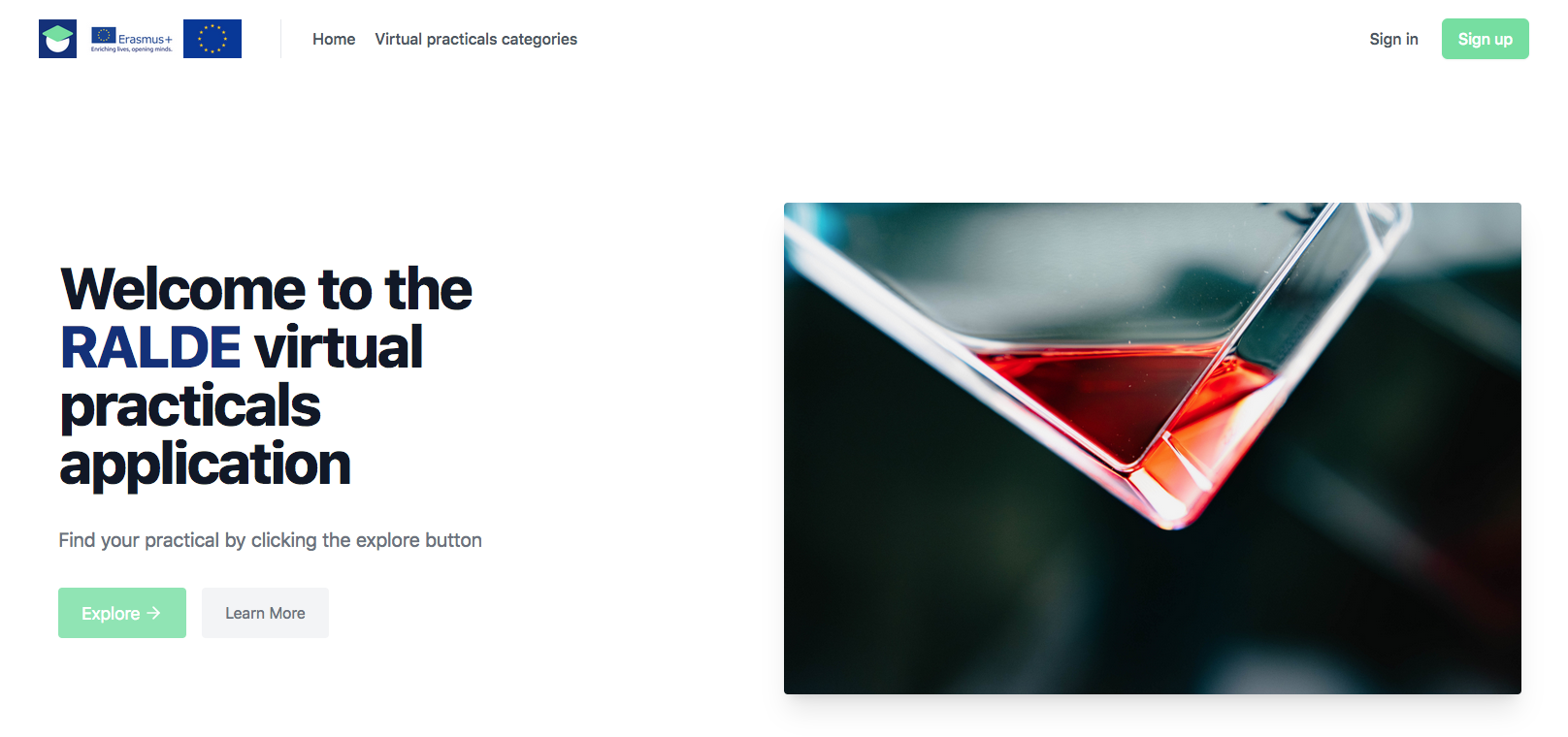From lab to screen with Virtual Practicals for the Digital Age
With more and more online educational tools being developed, both paid and open source, our RALDE team saw the opportunity to investigate how teachers and educators can introduce virtual practicals into their curriculum. With these digital practicals offering such a versatile and innovative approach, it could be the next step of evolution our educational methods need.
Where we started
As a team dedicated to rethinking educational experiences, we recognized the potential of these ‘virtual practicals’ to transform laboratory learning, especially during the challenging times of the COVID-19 pandemic. Initially, our move towards virtual labs was driven by the necessity to maintain practical, hands-on learning in an environment where traditional classroom labs were inaccessible. However, as we started developing our virtual practicals, focusing on the areas of cell cultures and rodent dissection, we discovered the broader advantages of this approach.
Virtual labs are not only a solution for times of crisis but also a forward-thinking educational tool that offers accessibility, safety, and efficiency, transcending the limitations of physical labs. Our journey into creating these virtual practicals from scratch gave us valuable insights and feedback into the feasibility of such endeavors for educators globally. We realized that what began as a pivot during a pandemic could well be a sustainable and versatile method for delivering practical science education in various contexts, far beyond our initial expectations.
Understanding the opportunities and drawbacks of using innovative techniques
As we navigate through this shift from traditional to digital laboratory experiences, it’s crucial to weigh the advantages and potential drawbacks. The following lists of pros and cons provide a comprehensive overview, helping educators, students, and institutions to understand the multifaceted impacts of virtual practicals. This balanced perspective aims to inform decision-making and guide the effective integration of virtual labs in educational settings.
Pros
1. Accessibility: Virtual labs are accessible to a wider range of students, including those in remote or resource-limited areas.
2. Cost-Effectiveness: They reduce the need for expensive lab equipment and materials, making practical education more affordable.
3. Safety: Eliminates risks associated with handling hazardous materials or conducting potentially dangerous experiments.
4. Flexibility: Students can access virtual labs at any time, allowing for self-paced learning and accommodating different learning styles.
5. Scalability: Virtual practicals can cater to a large number of students simultaneously, overcoming the space and resource constraints of physical labs.
6. Consistency in Experimentation: Ensures that all students experience the same standard of lab setup and conditions.
7. Interactive Learning: Enhanced interactivity and engagement through simulations that might not be feasible in a physical setting.
8. Data Collection and Analysis: Simplifies the process of collecting and analyzing data, often with built-in tools and software.
9. Environmental Friendly: Reduces the ecological footprint by eliminating the need for animals, chemicals and disposable lab equipment.
Cons
1. Lack of Hands-On Experience: Cannot fully replicate the tactile experience and manual dexterity skills developed in physical labs.
2. Technical Challenges: Dependence on technology can be a barrier, especially with poor internet connectivity or lack of digital devices.
3. Reduced Social Interaction: Misses out on the collaborative and social aspects of learning in a physical lab environment.
4. Limited Exposure to Real-Life Scenarios: May not fully prepare students for real-world lab situations, where unexpected outcomes can occur.
5. Simplification of Complex Processes: Some virtual labs might oversimplify experiments, not reflecting the true complexity of scientific work.
6. Learning Curve for Instructors: Teachers may require additional training and time to effectively incorporate virtual labs into their curriculum.
7. Evaluation Challenges: Assessing students’ practical skills and techniques can be more challenging in a virtual environment.
8. Technical Limitations: Some complex experiments might be too difficult to simulate realistically in a virtual setting.
9. Potential for Reduced Engagement: Without the physical aspect of lab work, some students might find virtual labs less engaging or motivating
Initially, we focused on creating individual virtual practicals in cell culture and rodent dissection. These were designed with specific learning goals in mind, ensuring that they not only complemented traditional lab experiences but also enriched students’ understanding before they even entered a physical lab.
The development of our rodent dissection tool was driven by a dual purpose: to offer a high-value educational experience and to significantly reduce the use of animals for educational purposes. This tool represents our commitment to ethical learning practices, preserving animal lives without compromising the quality of education.
As our project progressed, we recognized the potential for a broader application. We pivoted to creating an open-source platform that could host multiple practicals, a decision that opened up new possibilities for educators around the world. This platform, though currently a minimum viable product (MVP) due to developmental time constraints, lays the groundwork for a future where educators can develop and adapt their virtual practicals with ease. Unlike a single, baked-in practical, our platform offers flexibility and adaptability, allowing educators to tailor content to their specific teaching needs and objectives.
This development journey reflects our belief in continuous innovation and adaptation in education. By providing this open-source tool, we aim to empower educators to create bespoke virtual practicals, thereby broadening the scope and impact of practical science education in a rapidly changing world.
Test your Lab Skills


Learn more from the team behind the tool
In our commitment to transparency and educational collaboration, we have created a video series that offers a behind-the-scenes look at the development of our virtual practical tools. This series delves into the crucial decisions, creative processes, and technical challenges we encountered while building these innovative educational resources. From the initial concept to the details of execution, these videos provide a great overview of our journey.
By sharing our experiences, we aim to inspire and support others in the field of education to explore the vast potential of virtual practicals. We encourage viewers interested in educational innovation to watch the full series to gain a deeper understanding and practical insights of what it entails to create a virtual practical.
Download the Source Code
For those interested in exploring the possibilities of virtual practicals further, we invite you to download the source code of our tool, available through the link provided. This resource offers an exceptional opportunity to delve into the mechanics of our platform, understand its architecture, and potentially adapt or expand upon it for your educational needs.
Whether you’re looking to integrate our existing practicals into your curriculum or inspired to develop your own, the source code is a gateway to a world of educational innovation. We encourage educators, developers, and students alike to utilize this resource as a stepping stone towards creating more interactive and engaging learning experiences in the realm of virtual science education.

P.S. This might be the team you need
Building a successful virtual practical requires a collaborative effort from a diverse team, each bringing their own expertise to the table. We propose a team composition that includes one or two skilled developers, preferably with scientific background, who can bring the tool to life with their technical skillset. A scientist is crucial for ensuring the accuracy and educational value of the content, making the practicals relevant and effective. Additionally, a UX Designer plays a pivotal role in creating an intuitive and user-friendly interface, ensuring that the tool is accessible and engaging for students. Together, this team can create a virtual practical that is not only true to the learning objectives, but also captivates the student’s interest. This combination of skills and perspectives is what makes a team well-equipped to venture into the creation of impactful and effective virtual practicals.
Download the Virtual Practicals Materials

Virtual Mammalian Cell Culture Practical

Virtual Rodent Dissection Practical

